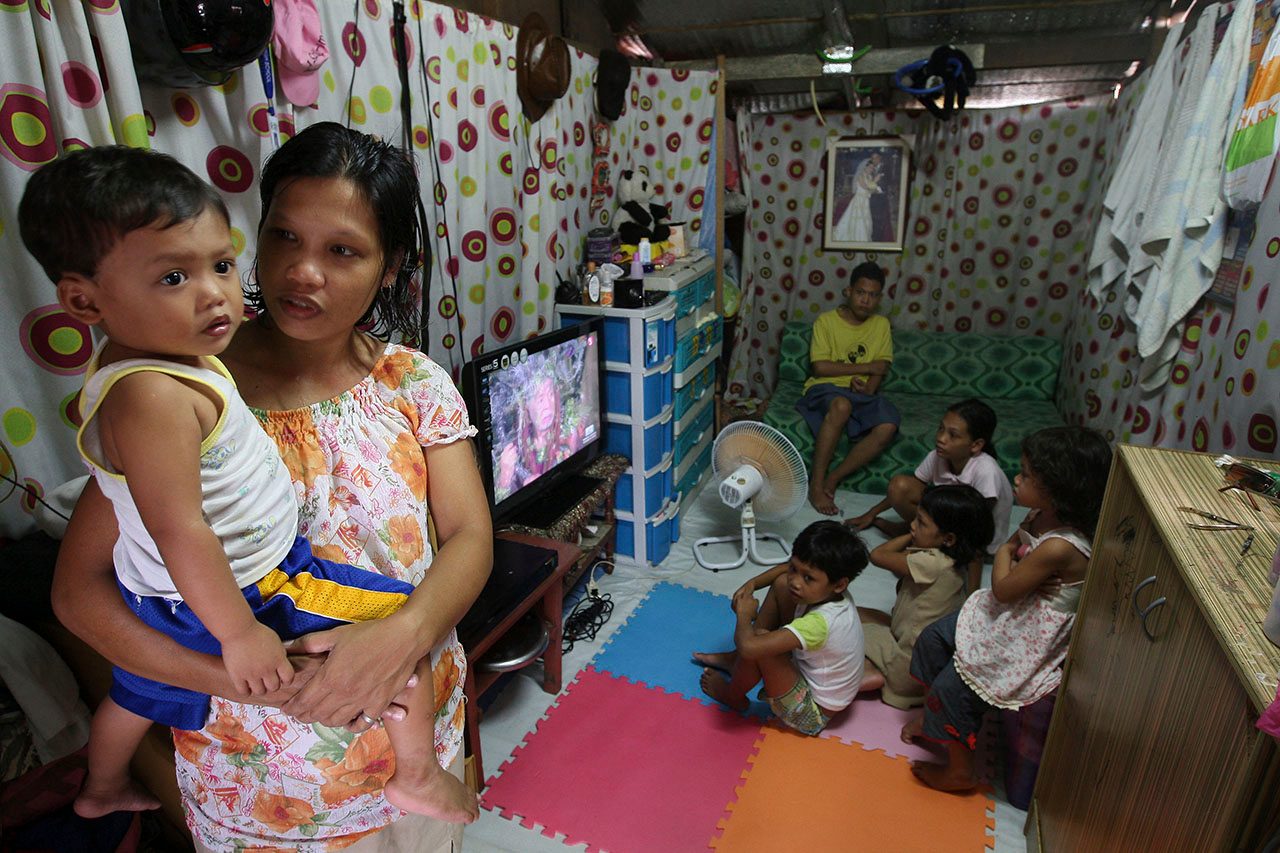SUMMARY
This is AI generated summarization, which may have errors. For context, always refer to the full article.

MANILA, Philippines – A recent study shows most Filipino children still prefer watching television when they get home after a long day of school, and they like watching teleseryes (television series) or adult-oriented shows.
Most Filipino children watch television for close to 3 hours during weekdays, and 6 hours during weekends, the same study showed. Both are beyond the internationally-prescribed daily exposure to television which is only 1 to 2 hours.
The study, conducted by the National Council for Children’s Television (NCCT) late February to March 2015, surveyed 4,395 children below 18 years old from Grades 3 to 10 enrolled in 209 public and private elementary and high schools all over the country.
It revealed that during weekdays, many children watch television from 5 pm to 10 pm – considered the prime time of Philippine television replete with teleserye programming.
| Time slots | Weekday | Weekend |
| 6 am to 9 am | 13.7% | 29.5% |
| 9 am to 12 nn | 6.3% | 43.2% |
| 12 nn to 1 pm | 12.50% | 31.5% |
| 1 pm to 5 pm | 8% | 36.6% |
| 5 pm to 7 pm | 51.8% | 37% |
| 7 pm to 10 pm | 48.4% | 49.6% |
“Several studies pointed out how television programs, which are not specifically created for children, may not be beneficial toward their growth, even without the existence of vulgarity and violence in its content,” the study read.
“Any concept that is improperly interpreted by children could mean a shift in their perspective, and any incorrect inferences to what is ‘real’ and ‘socially acceptable or correct’ could lead to possible conflicts in a child’s development.”
When it comes to genre, more children watch shows categorized as comedy and children’s television, followed by news, education, drama, and music.
“Majority of children prefer watching teleseryes or adult-oriented television shows like comedy, drama, news, and foreign television series dubbed in Filipino,” the report read.
But the study could not determine whether this trend is because of “the lack of child-oriented shows, marred by the inability of television networks to follow the 15% child-friendly programs policy under the provision of the Republic Act 8370.”
RA 8370 or the Children’s Television Act of 1997 requires every broadcast network to allot 15% of their daily total airtime for education and child-friendly shows.
Favorite teleserye
Since the study was conducted early 2015, the ABS-CBN teleserye Forevermore, starring the popular love team of Enrique Gil and Liza Soberano, topped the list of Filipino children’s most favorite local television shows. The show was still airing then.
For the most favorite foreign television program, the top choice was the Korean drama My Love From The Star which aired in GMA Network.
| Top 15 most favorite local shows | Top 15 most favorite foreign shows | |
| 1. | Forevermore | My Love From The Star |
| 2. | It’s Showtime | Fated to Love You |
| 3. | Dream Dad | NBA |
| 4. | Once Upon A Kiss | The Heirs |
| 5. | TV Patrol | Empress Ki |
| 6. | Matanglawin | Meteor Garden |
| 7. | Eat Bulaga | Discovery Channel shows |
| 8. | Wansapanataym | Spongebob |
| 9. | Inday Bote | Star Movies shows |
| 10. | Bagito | Phineas and Ferb |
| 11. | Got to Believe | The Voice |
| 12. | ABS-CBN shows | Sofia the First |
| 13. | Gandang Gabi Vice | Hunger Games |
| 14. | Oh My G! | Cartoon Network shows |
| 15. | PBA | Masterchef |
Most of the respondents (48.7%) have access to only one television in their household, but a significant number have access to more than one unit:
- 2 television units – 30.9%
- 3 television units – 11.2%
- 4 television units – 3.9%
- 5 or more television units – 2.6%
On why they like watching television, many children cited the following reasons:
- to gather information for their homework/academic requirement or just to learn new and interesting things
- to tune in to the programs that they like
- to serve as a pass–time activity
- to do school or academic requirements
Role of parents
The study also stressed the role of parents in curbing the negative effects of television on children.
While most of the children watch television with their parents most of the time, a significant number still watch without guidance from adults.
| Parents/guardian’s guidance while watching television | Percentage |
| Always | 26.80% |
| Often | 37.60% |
| Seldom | 28.00% |
| Never | 7.70% |
“The intervention of adults in television-viewing habits creates the difference between learning something valuable or picking up a negative attitude from the programs that a child is exposed to,” the study read.
The NCCT urged media companies to produce more television programs that are “sensitive to the developmental needs of a child.”
The study also advised television networks to “create a more child-friendly viewing experience” during the 5 pm to 10 pm time slot, since many children are tuned in. (READ: Childhood TV addicts more likely to commit crime: study)
Results of this study will be used by the council in drafting new children’s television standards. – Rappler.com
Add a comment
How does this make you feel?
There are no comments yet. Add your comment to start the conversation.